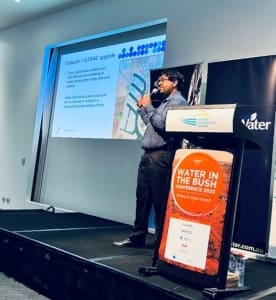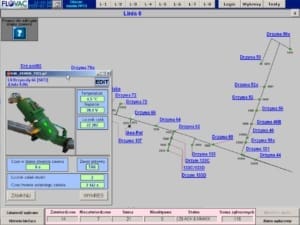Automating air injection during tourism bursts
Vacuum sewer systems are highly resilient and adaptable, and the Water Corporation in Western Australia has shown how they have used technology in a clever way with the help of Flovac.
The Water Corp had a unique situation with one of their remote vacuum systems in the town of Exmouth on Ningaloo Reef.
Regularly listed as one of the top 10 destinations in Australia, tourism pressures has led to increased flows in the town during peak tourism seasons. In particular, this year saw the towns population increase from 3000 people to 30,000 people as it became the centre of a solar eclipse global event. This included a great video incorporating the 50th anniversary of Pink Floyds, Dark Side of the Moon

Exmouth WA
How does any sewage system cope with massive variations in population? If you size it for peak, then sewage will not flow during the off peak periods. If there is a big increase in flow there could be overflows. Overflows in such a pristine location was not an option. Vacuum systems operate on a pressure differential which manages a complex mix of air and water. Systems are all designed for a specific air to liquid ratio. If there is too much air, then either you get very high energy costs with increased pump runs, or flows that don’t carry efficiently to the station. Too much liquid and there is a risk of overflows, or capacity issues at the rising main (force main) or treatment plant (discharge point).
Flovacs wireless monitoring system has a unique feature. The ability to alter the air to liquid ratios within the system. Programmed into the networks, different valves can be programmed to alter the mix to either increase or decrease the amount of air required along the vacuum main, changing the air liquid ratio. In dealing with seasonal issues, like Exmouth, or in areas that can get inundated by too much water via hurricanes or storm surges like Key Largo, Florida, the ability to change the air to liquid ratio becomes an important tool for managers and operators. It is fantastic that monitoring can identity infiltration, but it is essential that we give the operators the tools to handle the system when it occurs.

Rajiv Narendranathan
Last month Rajiv Narendranathan , from the Asset Management Team for the Water Corporation presented a paper at the AWA (Australian Water Association) conference in Darwin. The title was IMPROVED PERFORMANCE OF VACUUM SEWERS WITH PRESSURE MONITORING ALONG VACCUM MAINS AND PROGRAMMED AIR INJECTIION BASED ON PRESSURE TRENDS.
In his talk Rajiv said
Exmouth is approximately 1,100 Kms north of Perth and about 550Kms south-west of Karratha and the remoteness of this town makes it challenging to operate. Exmouth has a population of 2,500 people however as a tourist town the population can increase to about 6,000 people during peak holiday periods. The extreme variability in population results in unpredictable flow patterns which make the vacuum system in Exmouth near impossible to tune. Without appropriate levels of air being sucked into the system to cater for increased flows the vacuum lines are flooded and the pressures crash resulting in wastewater overflows.

Flovac AAI air injection success
The FLOVAC system monitors pressures along the Vacuum line in Exmouth and this improved visibility has enabled the system to be tuned to respond to variable flows from the catchment. The ability of this system to monitor pressures and inject air into the line appropriately has resulted in the air/liquid ratio being maintained during peak demand periods and maintain pressures throughout the vacuum line preventing wastewater overflows.
The project and rollout was a tremendous success and is being rolled out to numerous other projects in Western Australia. Flovac has used automated air injection systems at many projects around the world over the last twenty years. If you would like to learn more about setting up intelligent operations of your vacuum systems please let us know. Air Injection Systems






 monitoring technology is to provide the district with real-time alerts of system issues as a means of mitigating SSOs. The installation is expected to take approximately two years to complete and will utilize a basin-by-basin approach to make such a large-scale project manageable. The monitoring technology will be deployed throughout the district’s vacuum collection system, grinder pump collection systems and force mains. This includes nearly 3,000 collection pits.
monitoring technology is to provide the district with real-time alerts of system issues as a means of mitigating SSOs. The installation is expected to take approximately two years to complete and will utilize a basin-by-basin approach to make such a large-scale project manageable. The monitoring technology will be deployed throughout the district’s vacuum collection system, grinder pump collection systems and force mains. This includes nearly 3,000 collection pits.
